Working from home is an increasingly popular alternative, with over five percent of the American population now working remotely.
This surprising figure is only projected to rise in the future, and up to fifty percent of the newly mobile American workforce is expected to be working from home by 2027.
What could be better than a home office where you can work in peace?

Follow our step-by-step guide below to find out how to soundproof your office.
What You Will Need:
Tools required:
- Caulk gun
- Drill
- Dust mask
- Screw gun
- Tape measure
- Taping knife
- Utility knife
Materials required:
- Acoustic sealant
- Carpeting
- Dampening adhesive
- Drywall
- Fiberglass insulation
- Gloves
- Plywood
- Rubber seals
- Window material
Follow these steps to soundproof your office:
1. Seal All Gaps
When you’re soundproofing any space, make it as airtight as possible.
To seal up any gaps, holes, and spaces that can allow noise to seep in and out, use a high-quality acoustic caulk. By investing in a decent caulk, you’ll ensure it remains comfortably in place for years.
You should look out for areas near windows and door frames and focus on any cable and piping.
Take your time with this stage of preparation for soundproofing. Without setting down proper and solid foundations, the rest of your efforts will be in vain.
2. Soundproof the Floor
Luckily, soundproofing your floor is much easier than you might imagine. This surprising fact goes for many elements of soundproofing even though we tend to think we need a great deal of scientific knowledge alongside some practical skills. The truth is, soundproofing is straightforward and well within reach of most amateurs.
To effectively soundproof a floor, follow these simple tactics:
- Add high-density products to improve the mass of the floor
- Improve the way the floor absorbs sound energy and vibrations (if you skip this step, the mass added will have relatively little effect)
- Use acoustic insulation so that sound won’t become amplified in the sealed chamber under the floor
Note: You’ll achieve a more powerful impact by diversifying materials to improve the mass of the flooring than if you use the same substance.
Carpet is highly effective at dampening noise. Add a few rubber mats, and you’ll notice a marked difference without spending a fortune.
3. Soundproof the Walls
Once the floor is padded out, move on the walls.
Soundproofing the walls in your office is straightforward. You can use panels and a damping compound to create a remarkably effective sandwich effect.
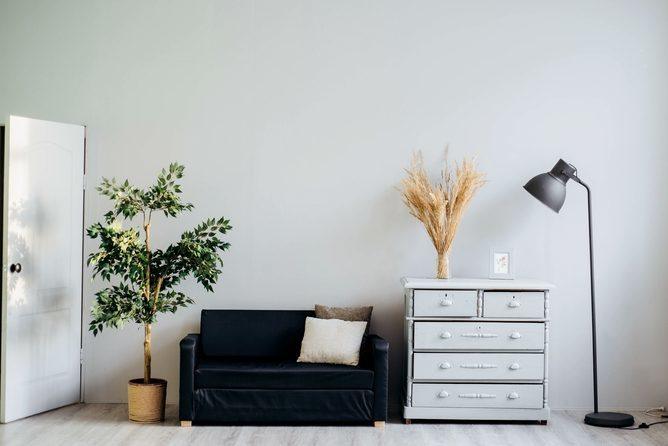
Creating a room within a room is undoubtedly the best method of soundproofing, but you will lose plenty of space, so make sure it’s the right solution for you.
Use an acoustic sealant to fill in any gaps, however tiny. Sound doesn’t need much space to penetrate and spoil the effects you’re working so hard to create. It is well worth checking that all pathways are completely blocked.
The two walls you now have must not be nailed together directly. It would lead to vibration being transferred and traveling between the rooms. Instead, separate these walls in a process called decoupling.
4. Soundproof the Windows
Windows are one of the most common spots where noise enters and exits, which is especially true if you live on or near a busy street.
The optimum solution is to buy soundproof windows, which are double-paned and separated by a spacer.
Failing this, you could consider soundproofing curtains, but these will only work to a limited extent.
Glueing plastic sheets directly over the windows will dampen the noise, but then you’ll lose visibility. Acrylic windows use the same principle, but the effect is strictly limited.
Maybe you’re creating a decoupled room as we outlined above? If so, use thick glass for the windows you decide to install. Acoustic glass sandwiched around a third thin sheet of glass will cut down a massive amount of escaping noise.
5. Soundproof the Ceiling
Soundproofing the ceiling might not always be necessary. If the noise affecting your office is coming from above, though, think seriously about attaching drywall to your ceiling. Build out a frame, attach it to the ceiling, then add extra wallboard.
If this level of DIY is beyond you, consider purchasing some acoustic panels instead.
6. Check For Weak Spots: Doors
Just like the windows, doors are a common weak spot. Neglecting any area of your office is reckless and will derail the soundproofing process quickly, undoing all your hard work.
Check closely that the door is sealed. You might also think about installing a solid core door, which will absorb sound more effectively than a hollow-core door.
7. Add Sound-Absorbing Paint
It is possible to pick up paint that lessens noise.
If a new paint job is not the order of the day just yet, think about using acoustic wall foam instead.
8. Soundproof the Air Vents
Overlooking air vents when you’re soundproofing could be a costly mistake.
Since air vents are likely to be the largest hole in the wall, making provision for soundproofing here is critical.
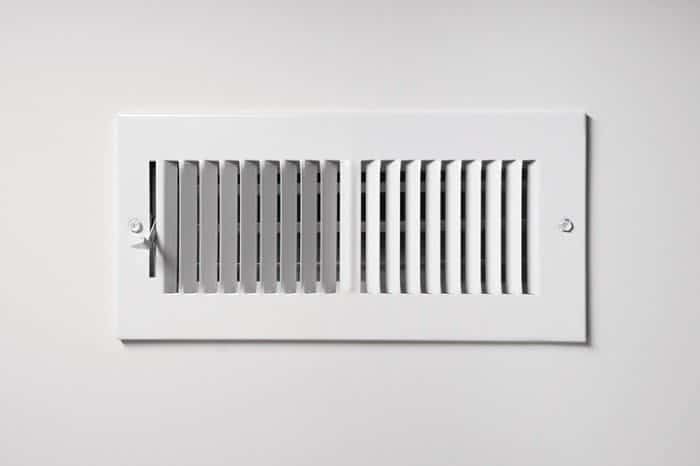
One method is to block the air vent using expandable foam or filling it with other material. It is not to everyone’s liking, though.
The alternative is to build a sound maze in the vent, where the airflow is maintained, and noise penetration is minimized.
9. Eliminate Echoes Inside The Office
The effect of noise deteriorates when there is rattling and echoing off hard surfaces.
What can you do to mitigate this?
If you have hard flooring, throw down some thick rugs which have lots of loose fibres as these help absorb rather than reflect, which helps to deaden ambient sounds.
Curtains stop sound bouncing around too much, just like any other soft fabric you can weave into the room to soften things up.
Note: Solving the echo in your office won’t make the room quieter. What it will do is reduce the grating impact of the sound entering your workspace.
10. Conduct Final Checks
Final checks should focus on any gaps, so check all the caulking and leave no stone unturned.
As a caution, ensure you account for all electrics and any extra airflow considerations before anything else. The last thing you want is to compromise the integrity of your soundproofing by carving through it later.
Not everyone is fortunate enough to work from home.
What about if you work in an office where cubicles abound and where daily noise is a constant irritation?
How To Soundproof Your Office Cubicle
Soundproofing office cubicles is a valuable skill if you end up in a workplace with this annoying layout.
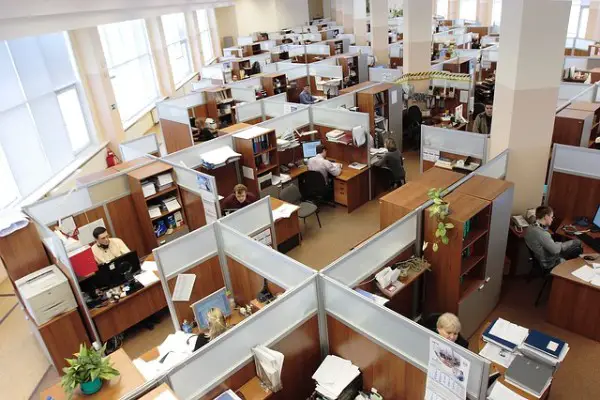
The cubicle configuration might be cost-effective for the employer, but concentrating with that level of noise can be challenging for the workforce.
If the noise peaks to where your work is impacted, fight back.
The good news is there are plenty of simple steps to reduce noise pollution, improving your mood and productivity without having to splurge.
1. Cover Cubicle Walls With Thick Fabric
If your office has relatively low to average levels of noise, draping heavy-duty fabric all over the cubicle walls can make a dramatic impact on the noise that penetrates your space.
Soundproof office cubicles with blankets, for example. The sound struggles to pass through the fibers of these specially designed blankets, and you should notice an immediate difference.
It is by no means a comprehensive solution, and it won’t be particularly effective in noisy backdrops. It’s certainly worth a try, though. Soundproofing blankets are cost-effective, too.
2. Add Some Soft Furnishings
Much of the noise generated in an office environment is from sounds bounced around hard furniture and surfaces.
You can break the landscape with softer furnishings. From cushions and drapes to sound absorbing plants (with big broad leaves) and flowers, you can stop those hard surfaces from dominating and creating a din.
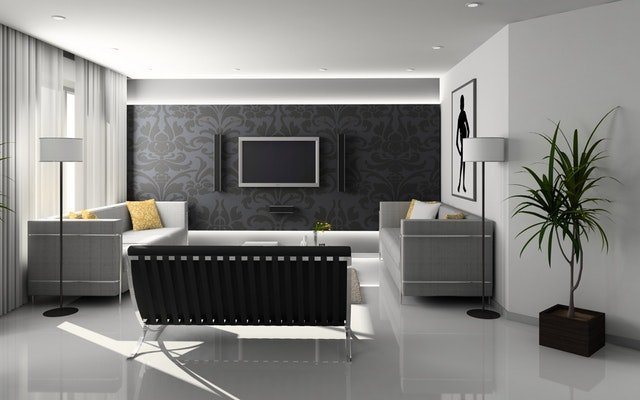
Adding cabinets or shelving also provides the sound with more places to bounce off, and it peters out quicker.
Stack heavy files against the walls of your cubicle and keep your desk busy so the sound has plenty of absorption points.
3. Consider Carpeting
Hard flooring, whether it’s hardwood, laminate or tiling, creates far more noise than carpeting.
The thicker the carpeting, the better but this might not be a possibility if you’re working in an office with bare floors.
Why not consider adding a rug or two instead? It may not have quite the same impact as plush wall-to-wall carpeting, but rugs are certainly better than nothing.
4. Use Mats on The Floor
If you do have carpets in your office, that’s ideal and will definitely take the noise down a notch within the cubicle.
Rubber floor mats slipped beneath the carpet can have an equally wonderful effect in dampening noise. The bonus is that these rubber mats are extremely cost-effective.
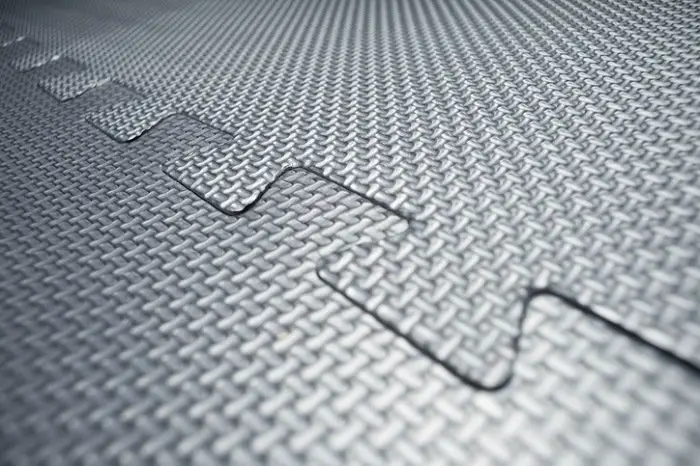
Look for the thickest and densest rubber mats you can find. Place the mats directly under the carpet throughout the area, for reduced noise and enhanced comfort.
5. Affix Acoustic Panels
Acoustic sound panels like the ones you would find in a music recording studio make an affordable and highly effective approach to sound reduction in your office cubicle.
You will need to dig deep into your pockets to implement this idea, though, and you’ll also need your employer’s permission. If you have the nod from your company, purchase yourself a few soundproof foam panels as you prepare to fit them to the walls.
Covering as much of your cubicle area as possible with these acoustic panels will make a dramatic difference to the amount of noise you’ll be exposed to as you work.
6. Pop on Some Soundproof Curtains
In low to mid-noise environments, soundproof curtains are remarkably effective.
Hang these thick curtains from the ceiling and allow them to fold down over the walls of your cubicle. They will serve to block out a significant amount of noise coming from outside your workspace.
In an ideal world, your co-workers will catch on to the benefit of this approach. As the other cubicles climb on board the soundproofing wagon, the cumulative effect is a quieter workplace all around.
7. Communicate With Co-Workers to Minimize Noise
If you work with colleagues who seem reasonable and amenable to change, consider addressing the issue of noise pollution head-on. If you are all on the same page and committed to reducing sound levels, that’s half the battle won.

Liaise with management and request some form of a directive on noise etiquette in the workplace. Minor tweaks can make a vast difference, like smartphones set to silent instead of incessantly pinging, and not using speakerphones for private calls.
The approach certainly won’t be appropriate in all backdrops, but if you think it’s appropriate, it’s worth a shot.
8. Block All Rogue Gaps
The tiniest space can let in sound. Think about sitting in a car with the window open just a fraction. That tiny crack allows all the noise from the street to penetrate the car. Roll it up, and you are instantly cocooned in near silence.
Grab some acoustic caulk and seal off any gaps, nooks, and crannies around your cubicle. If you don’t have any of these materials on hand, you could use small pieces of paper instead. Foam also works well.
Strips of foam are a fantastic idea, especially when applied to the bottom of your cubicle walls.
Even if you feel these gaps are negligible, take some time to find and fill each one. You might be surprised at the difference filling them makes on the overall sound penetration in your cubicle.
9. Invest in a White Noise Machine
You’ll certainly still hear a degree of ambient noise, but its general impact will be lessened considerably.
While these machines are more commonly used to promote sleep in noisy environments, such as for young babies, the concept also works well in an office setting when you need to focus.
10. Establish Quiet Areas
If you’ve done all you can to block out noise from your cubicle, but the overall noise levels are still bothering you, it’s worth examining whether a physical rearrangement is possible.

Depending on the layout of your cubicles and how your team is set up, you might be able to establish quiet areas for work with other zones where it’s fair game to make a bit more noise.
Rearranging the office might not be practical, but it’s always worth implementing any small changes before going full throttle. A practical alternative is to invest in a purpose-made soundproof phone booth which gives you a small quiet cubicle that staff can book out for calls, meeting or just a bit of quiet time alternatively you could get some soundproof room dividers to help take dampen sound and provide some noise shelter around your desk.
A cooperative workforce might benefit considerably from a small suggestion like a new layout and ‘sound zones,’ so what have you got to lose? It may be the next best thing to a soundproof office.
As an Amazon Associate I may earn a small fee from qualifying purchases at no extra cost to you. This helps us run the site, so thanks for your support!
A very detailed article about how to soundproof an office, at home as well as in the workplace.
Office partitions are fantastic, they provide a bit of privacy a noise shelter, they help with distractions and can make the environment brighter with your chosen fabric options.
Thanks Vicky,
very true, office dividers can make a big difference if you don’t already use them!